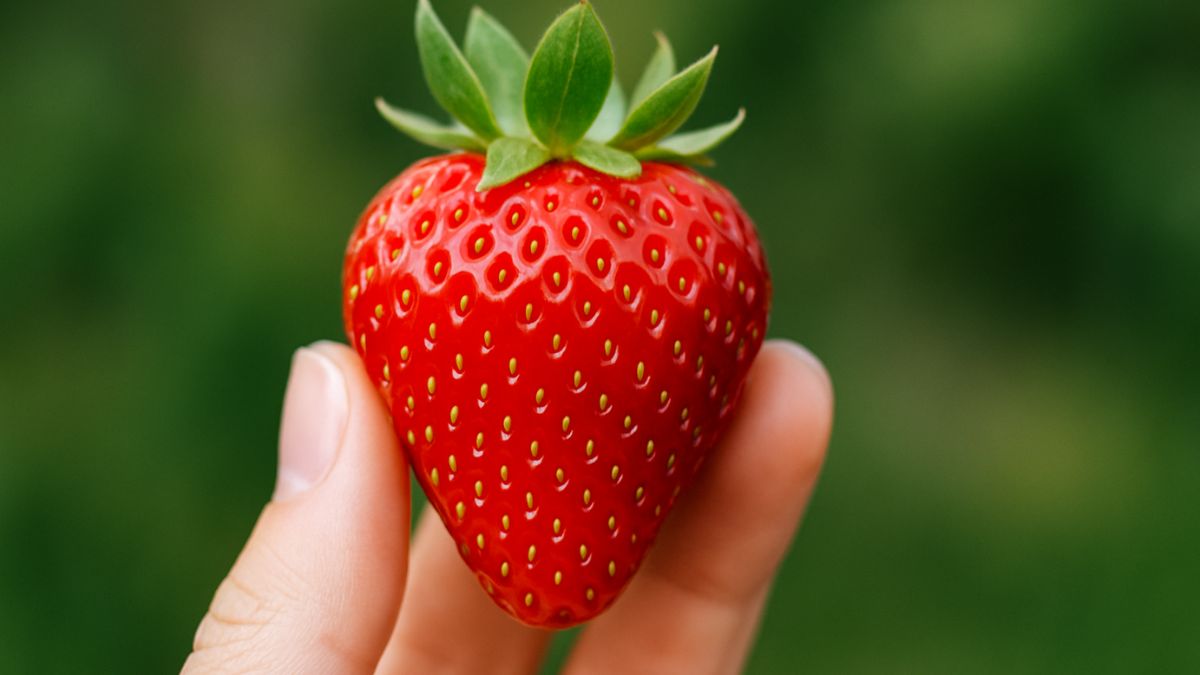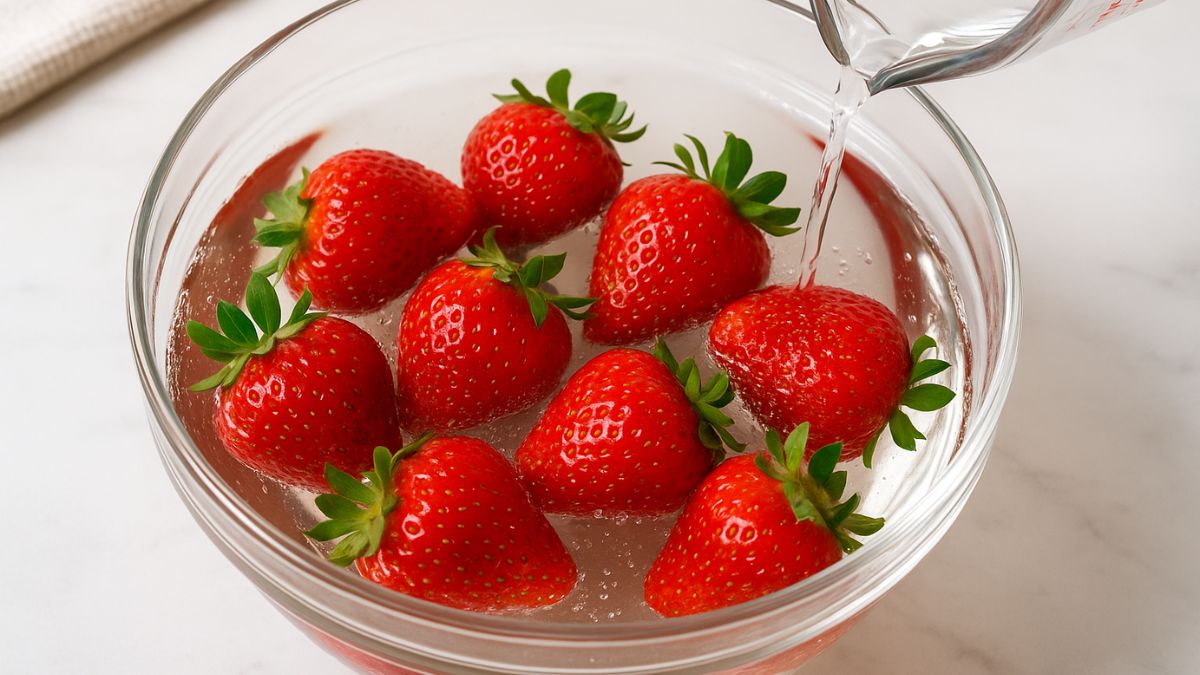New York: You grab a juicy pack of strawberries from the store, eager to toss them into your smoothie or snack bowl. But wait—do you just rinse and eat them? If that’s your go-to routine, you might be missing something important. Experts say strawberries are one of the “dirtiest” fruits, often coated in pesticide residue, hidden bugs, and mold spores. That’s where vinegar steps in—an old-school cleaning trick that’s getting viral traction for all the right reasons.
This isn’t just about getting rid of a little dirt. Washing strawberries properly can reduce foodborne illness, prolong freshness, and actually improve taste. It’s an easy, affordable step that adds major health value. And no, your berries won’t end up tasting like a salad dressing—we’ll show you how to avoid that too.
In this guide, we’ll walk you through exactly how to clean strawberries with vinegar—the right ratio, the timing, and tips to store them longer. Plus, we’ll explain why this matters so much, especially if you’re feeding kids or managing allergies. Let’s get into it.
Also Read: How to Make Egg Fried Rice at Home in Under 20 Minutes
Why You Should Clean Strawberries with Vinegar
Strawberries are porous and delicate, which makes them especially prone to trapping pesticides, dirt, and microbial residue. According to the Environmental Working Group’s Dirty Dozen list, strawberries often rank #1 in pesticide contamination—even when they look pristine.
Vinegar acts as a natural disinfectant. Its acetic acid content kills bacteria, loosens grime, and neutralizes pesticides—without any artificial cleaners. It’s safer, more affordable, and easier than you’d think. Plus, many food safety experts recommend this method to reduce the risk of E. coli, salmonella, and mold spores that can form even in refrigerated produce.
Another bonus? A vinegar soak can extend the life of your strawberries by several days, helping reduce waste (and saving you money).

How to Clean Strawberries with Vinegar: Step-by-Step
What You’ll Need:
- 1 part white vinegar
- 3 parts cold water
- A large bowl
- A colander or strainer
- Paper towels or a clean cloth
Steps:
- Make the vinegar solution: In a large bowl, combine 1 cup white vinegar with 3 cups cold water. Stir gently.
- Add strawberries: Place uncut strawberries in the bowl. Let them soak for 5–10 minutes. This removes bacteria, pesticides, and any critters hiding in the fruit.
- Rinse thoroughly: After soaking, drain the strawberries using a colander and rinse them under cold water to remove any vinegar residue.
- Dry completely: Lay them on a clean towel or paper towel and pat them dry. Moisture is the enemy of freshness—make sure they’re fully dry before storing.
- Store properly: Keep the strawberries in a lined container (paper towels underneath) and leave the lid slightly open to prevent condensation. Store in the fridge.
Total time: About 15 minutes
Result: Clean, safe, and longer-lasting strawberries
Does Vinegar Affect the Taste of Strawberries?
Short answer: No—if rinsed well.
As long as you follow the rinse step, your strawberries will taste just as sweet and fresh. There’s no lingering vinegar flavor once the berries are patted dry. In fact, many people say properly cleaned strawberries taste cleaner and juicier.
Can You Use Apple Cider Vinegar Instead?
Yes, but stick with white vinegar if you want a neutral, no-color soak. Apple cider vinegar can be slightly more expensive and may tint or flavor the strawberries if not rinsed thoroughly. However, both work for disinfecting—the key is the 1:3 ratio and thorough rinsing.
Pro Tips to Keep Your Strawberries Fresher, Longer
- Don’t hull them before washing—keeping the stems intact helps protect texture.
- Only wash what you’ll eat within 2–3 days to avoid sogginess.
- Use a salad spinner lined with paper towels for fast drying without bruising.
Washing strawberries with vinegar isn’t just a hack—it’s a health and taste upgrade. In just a few extra minutes, you can clean away the unseen dirt, bacteria, and pesticide residues that water alone can’t handle. Whether you’re prepping for a picnic, a smoothie bowl, or just a healthy snack, this method ensures your strawberries are as fresh, clean, and safe as they can be.
And the best part? No fancy tools or expensive sprays—just vinegar, water, and a little care.







